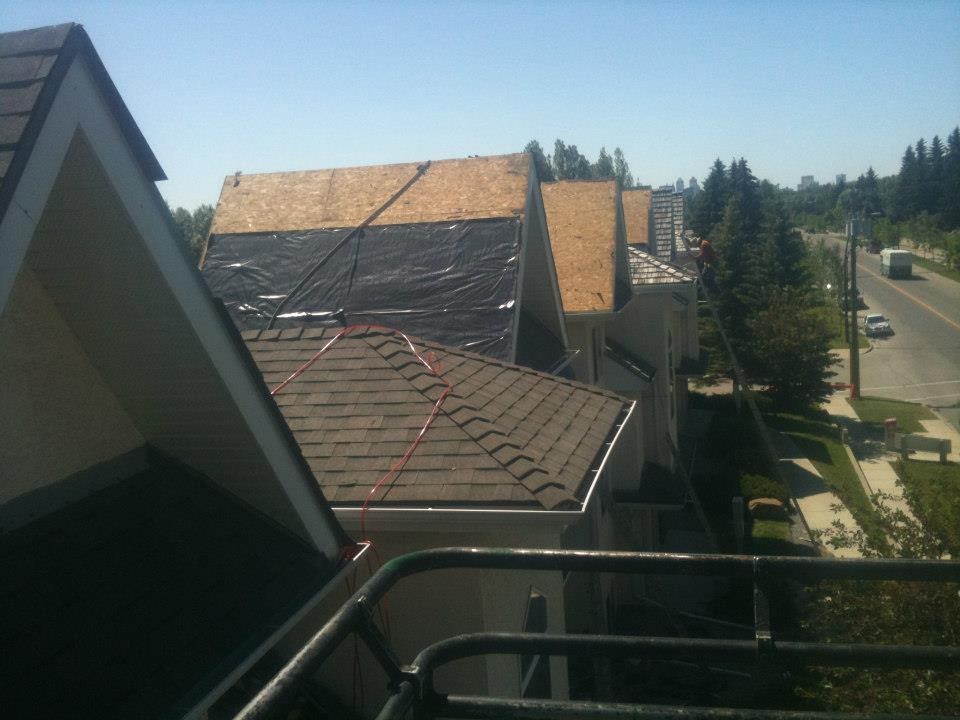Table of Contents:
Do you want to know how often you should replace your roof? This is determined by several factors and signs, including:
- Loose, cracked or damaged shingles
- Missing shingles
- Sagging
- Mould or rot
- Signs of water damage or leaking
- Holes or dark spots
To begin, we’ll go over how long your roof should last on average, depending on the materials it’s made of. We’ll then go over the various factors that can affect the lifespan of your roof and what they mean for you.
You should know without a doubt how often to replace your roof based on the information in this guide. Look up the average lifespan of each roofing material in the table above. Then, on your roof, look for the damage indicators listed above.
To make this information useful, you’ll need to know the age of your roof. As a result, you may have additional concerns.
Do you have any questions about how often your roof should be replaced? If this is the case, contact us to schedule a complimentary roof inspection and roof replacement.
Ready to learn more?
Average Lifespan of a Roof
The lifespans of different types of roofs differ. So, to begin, we’ll list our best guesses for average roof lifespans based on the roofing material.
Asphalt Shingles
On the other hand, architectural asphalt shingle roofs have a design that makes them more resistant to the elements. Roofs with three tabs should last 15-20 years under normal conditions before they need to be replaced. 3-tab asphalt shingle roofs can last up to ten years longer.
 Clay/Cement Tile Roofing
Clay/Cement Tile Roofing
One of the most durable roofing materials available is clay/concrete tile. The tiles are not only highly durable but also quite heavy. This means they’ll be installed on top of extra-durable roofing reinforcement, giving your home even more protection.
As a result, tile roofing is exceptionally long-lasting, lasting anywhere from 50 to 100 years.
Slate Roofing
Slate is the most long-lasting roofing material. It will, in most cases, last 100 years or longer.
Wood Shingles
Wood shingles have a 25-30 year average lifespan. They do, however, necessitate maintenance, which reduces their useful life.
If you don’t keep your roof free of leaves and moss, moisture will be trapped against the roofing, which will lead to decay. However, if you maintain your wood shingle roof properly, it could last for 50 years or more.
Fire can also damage wood roofing. As a result, it is dangerous and illegal to install in specific locations because it can easily catch fire.
Wood Shakes
Wood shakes are more resistant to UV rays and harsh weather than shingles due to their thickness. Roofs like these are expected to last 35 to 40 years.
However, upkeep is a consideration. A wood shake roof’s lifespan is determined by how well it is maintained.
Metal Roofing
Another extremely durable roofing option is metal roofing. Steel and aluminum, which are common metal roofing materials, should last for 50 years before needing to be replaced. Zinc and copper roofing, for example, can last for 100 years or more.
Other Factors That Affect Roof Lifespan
Your roof’s lifespan is influenced by factors such as maintenance and weather, including the materials. Certain weather conditions, for example, may make wood shingles more susceptible to mould and crack. Sealant erosion can occur on even the most durable metal roofs over time.
In addition, because asphalt shingles are very light, they are more likely to come loose in areas where high winds occur frequently. Trees or tree branches can also be knocked into the roof in windy areas with a lot of foliage, causing damage.
Moisture can seep into the roofing material through a small crack. Temperature changes cause the crack to widen as it expands and contracts. Furthermore, if such damage is not addressed promptly, it will deteriorate rapidly.
If you’re looking for a professional roof inspector, contact Remember Me Roofing today to ensure your roof is performing at its peak!



